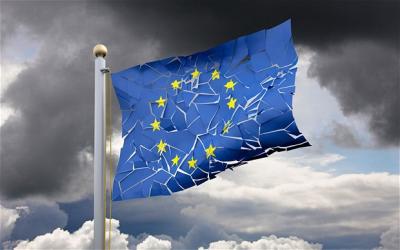Eurozone: A house built without proper foundations?

ROME - “The Eurozone was ill designed and lacks proper foundations that would make it a more functioning and reliable monetary union,” said Paul De Grauwe - Belgian economist and LSE professor - on Thursday at an event hosted by LUISS University concerning the collapse of the Eurozone and its future.
The Eurozone is split between creditor and debtor nations, meaning that the former spend more than they produce while the latter spend less. In other words, Germany and Holland are the debt-free countries with surpluses while Greece and others are the ones with debts to repay.
The system collapsed in 2010, with an enormous crash. Creditor nations imposed austerity to debtors in order to get back on track. But what does austerity entail? Cuts in spending reviews as well as a reduction in wages and prices.
According to De Grauwe, this vertical operation, imposed from the top (successful, northern countries) to the bottom (southern, debtor countries) created an unbalanced system. The reason behind this is because creditors imposed asymmetrical plans on debtors, whilst not introducing changes in their own economic policies.
This imbalance paved the way for stagnation in the Eurozone as well as the rise of unemployment and deflation. In addition, asymmetrical austerity brought with it the phenomenon of collective savings, meaning that each person attempted to save as much as possible, which in turn affected the collective income flows and created a negative spiral.
Hence, the paradox for De Grauwe is that austerity was meant to be a way to reduce the debt burden but actually increased that load. Austerity also had political implications within the Eurozone, undermining the political and governmental legacies of nation states during the crisis.
But what De Grauwe evidenced as the main structural problems that perhaps led to the Eurozone crisis, were so-called Eurozone design failures.
Once the Eurozone was created, the capitalist boom and bust that used to be present at national level, became no longer an individual but a collective feature. National stabilisers were not reproduced at a European level and the instability between banks and governments created general imbalances. Those combinations were the root cause of the current bad equilibrium within the Eurozone.
So what can be done in order to redesign this asymmetrical system? Or at least, what would be the ideal solution in order to halt the current and future crisis?
“The creation of a political union - together with the banking and fiscal union -” argued De Grauwe, underlying the necessity of a new structure with a deeper political power that, in period of crisis, would override Central Bank’s control as happens in many countries outside the Eurozone. (Britain)
In conclusion, what has been done until now - albeit with some positive results - seems to provide a “temporary solution”. Therefore, further changes need to be made.


